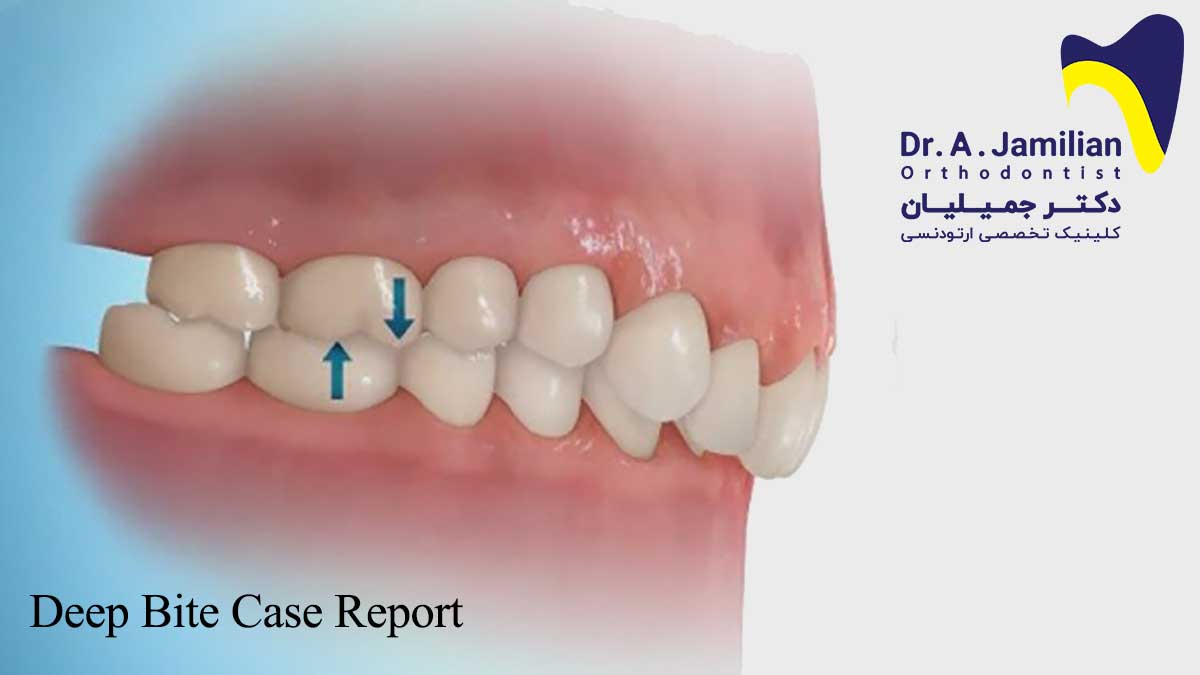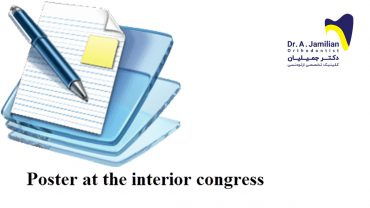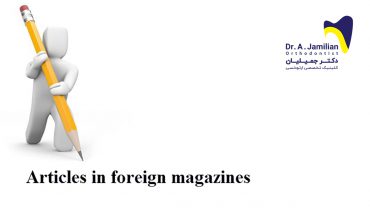DEEP BITE:
This case report deomstrated a 21 year-old patient with class I dental malocclusion; The patient’s severely prominent chin puts him in skeletal class III pattern.
Summary: The patient had Lower than normal maxillary-mandibular plane angle and horizontal growth pattern. Palatal inclination of the upper incisors and lingual inclination of lower incisors; crowding of the lower incisors;
Examination of head and face:
The patient had a skeletal class III pattern with no facial asymmetry; horizontal growth pattern and competent lips
Functional examination:
Centric occlusion and centric relation were coincident and there were no temporomandibular joint signs or symptoms.
Intra-oral examination:
There was evidence of anterior deep bite, lower incisors’ lingual inclination and crowding. The patient had a low caries rate with good oral hygiene with only one permanent tooth filled.
Treatment plan:
Proclination of the lower incisors would correct the mandibular incisor inclination thus reducing the crowding of lower incisors. This requires proclination of the upper incisors. Subsequently, normal relationship between upper and lower incisors could be achieved by these movements. Achieving a desirable Interincisal angle would make the deep bite less prone to relapse. Intrusion of upper incisors would also reduce the overbite.
Treatment results:
The patient’s deep bite has been corrected due to intrusion and proclination of the upper and lower incisors. A suitable relation between upper and lower incisors was achieved. A genioplasty was suggested during and after treatment to reduce the prominent chin, but the patient was satisfied with his looks and refused surgical correction.The total treatment time was 24 months during which deep bite was corrected and a favourable relationship was achieved between the upper and lower incisors, which could guarantee a no relapse treatment. Anterior bite plate and lower Hawley retainers were decided for post treatment. Anterior bite plate was used because the patient had tendency to deep bite and lower Hawley appliance was used in order to preserve incisors’ inclination.
Retention:
No deep bite tendency could be seen in the patient. However, Lower 1 to Go-Gn decreased from 107° to 105° and Interincisal angle increased from 116° to 117°. Furthermore, 1 year after the retention period, the anterior overbite and the mandibular plane angle were stable without any noticeable relapse. No signs and symptoms of temporomandibular dysfunction were noted. No relapse was seen after intrusion of the upper incisors due to the fact that intrusion of maxillary incisors is a stable procedure. Proper incisor relationship would also prevent relapse in deep bite patients.
Cephalometric data:
| Pretreatment | Posttreatment | Mean SD | ||
| Sagittal Skeletal Relations | ||||
| Maxillary Position S-N-A | 85° | 84° | 82º ± 3.5º | |
| Mandibular Position S-N-Pg | 87° | 86° | 80º ± 3.5º | |
| Sagittal Jaw Relation A-N-Pg | -2° | -2° | 2º ± 2.5º | |
| Vertical Skeletal Relations | ||||
| Maxillary Inclination S-N / ANS-PNS | 5° | 5° | 8º ± 3.0º | |
| Mandibular Inclination S-N / Go-Gn | 18° | 18° | 33º ± 2.5º | |
| Vertical Jaw Relation ANS-PNS / Go-Gn | 15° | 15° | 25º ± 6.0º | |
| Dento-Basal Relations | ||||
| Maxillary Incisor Inclination 1 – ANS-PNS | 107° | 122° | 110º ± 6.0º | |
| Mandibular Incisor Inclination 1 – Go-Gn | 85° | 107° | 94º ± 7.0º | |
| Mandibular Incisor Compensation 1 – A-Pg (mm) | -4 mm | 4 mm | 2 ± 2.0 | |
| Dental Relations | ||||
| Overjet (mm) | 4.5 mm | 2 mm | 3.5 ± 2.5 | |
| Overbite (mm) | 8 mm | 2 mm | 2 ± 2.5 | |
| Interincisal Angle 1 / 1 | 152 ° | 116 ° | 132º ± 6.0º |



